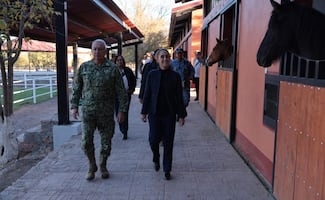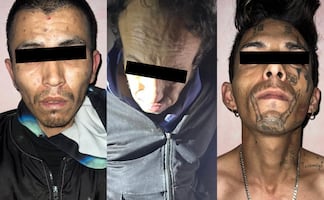Más Información

Padres y normalistas de Ayotzinapa marchan en Chilpancingo; acusan impunidad por asesinatos y la desaparición de los 43

Sheinbaum reconoce labor de las Fuerzas Armadas; hombres y mujeres que entregan su esfuerzo y su vida por amor al pueblo, destaca

Trump minimiza nuevas fotos con el pederasta Epstein publicadas por el Congreso; "no son gran cosa", dice

Recuperado, Ealy Ortiz retoma su liderazgo en EL UNIVERSAL; encabeza comida de fin de año de la empresa

Localizan a Yareth Alexandra, joven de 17 años privada de la libertad en Tecámac; la tenían escondida en una bocina
The Spanish Civil War was not only a dispute between two ideological perspectives but it also spread its threat against the civil population. The shadow of the purges traverses the peninsula throughout the conflict. When Francoism began to sway, President Azaña looked for refuge for the vulnerable groups on his side.
Recommended: Asylum in Mexico: A plural tradition
One of the very few countries that showed solidarity was Mexico , which was under the government of President Lázaro Cárdenas , who approved the initiative to give asylum to 456 Spanish children in 1937 . The project was in charge of first lady Amalia Solórzano and María de los Ángeles Azcárate de Chávez Orozco , founders of the Committee to Help Children from Spain . Hence it was acknowledged by Cárdenas in his notebooks by saying that the idea was born from “ a group of Mexican women who understand how to be patriotic and who considered that the effort Mexico must do to alleviate the situation of thousands of orphans should not falter in front of the possible obstacles (…) Mexico asks nothing for this act; it mainly establishes a precedent of what must be done between fraternal peoples when they experience difficult situations such as Spain does nowadays.”

Emeterio Payá Valera
, one of the refugees, wrote in his memories that political propaganda made him think that the group was exclusively comprised of war orphans , nonetheless, many traveled out of their parents’ request, who preferred to split away from them before watching them suffer the hell of hunger and persecution .

On May 17, 1937 , a France-bound convoy left Barcelona amid cry from relatives who hoped to recover their kids when the dispute ended. After spending some days at Bordeaux, they went on board the “ Mexique ,” the vessel that would take them to Veracruz .
Recommended: Exiled in Mexico: Evo Morales, Trotsky, and Rigoberta Menchú
After a brief stop in Cuba , where they could not disembark, they followed their journey to Mexican coasts. The reception at the port was crowded and warm. Declamations, presents, and compliments were heard that afternoon. After the warm reception, the “Spanish children,” got on a train to Mexico City . There, they met Cárdenas in an event that stressed the measure of the tragedy they had lived. In the middle of the event, a plane took off to throw publicity to the attendants; as soon as the refugees heard its engine, they threw themselves to the ground, which shocked the rest of the attendants. Then, the children left on the last stage of their journey, the one that would lead them to Morelia , where they would live and continue studying.

Among the adversities faced by authorities from both nations was determining how long the minors would stay in Mexico , as well as matters related to the revalidation of their studies. When the moment came to home the exiled, many other obstacles emerged: their ages were so different that they were hard to discipline. There were also discrepancies regarding customs and traditions . Payá Valera said that there were disputes due to the deeply rooted religious fervor of people in Morelia. “Back then, when the church had been such an active part against the Spanish Republic, children had not been left aside the environment of hostility against the Catholic church, and Morelia, therefore, could not have been less appropriate as a home.”

83 years have passed since the arrival of the “ Children of Morelia ,” who were a watershed for those of their fellow citizens who had to follow their steps. Many of them decided to live in Mexico and were influential in cultural matters ; others went back to Spain once Franco died, and others, the fewest, moved to other countries. Nevertheless, the empathy shown by the Mexican people is one of the permanent prints left in the history of our country when it comes to international relationships .

Recommended: UNICEF: Migrant children in urgent need all over the world
mp
Noticias según tus intereses
[Publicidad]
[Publicidad]









